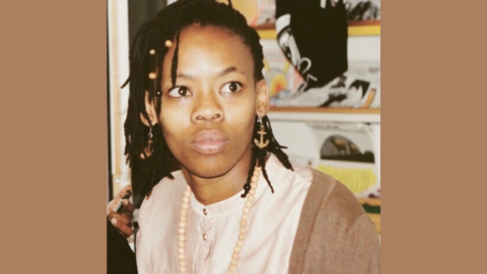These Dry Bones Live: South Africa’s Foundation of Sexual Violence by Athinangamso Nkopo

It may seem odd for an inquiry about current endemic sexual violence to do research in the archive going as far back as the 16th and 17th century. How can sifting through documents under themes such as gendered violence, race and gender structures shed light on our harrowing status quo? It seems necessary to determine the acceptable means of violence on peoples in this territory to better understand how gendered violence takes form at the time of slavery, colonisation, the South African war and Apartheid so that we may understand its present.
The archive lays bare the distorted patterns of gender and race that take root in early slave colonial society and persisted up to Apartheid. Records on records of women appear on official and legal documents having been sexually violated, mutilated and killed. These women are structurally muted in that, although we find words from them, the state never granted them full subjectivity, and their utterances remained, for them, utterly illegible. The indirect consequence of unbalanced sex composition was the alienation of slave women from broader social protections. The overwhelming negative stereotypical 'racial' explanations for slave behaviour also dehumanised them. The record reflects violence perpetuated by the lower echelons of sailors, knechts and poor whites in the form of murder and rape with emerging social ills resulting from gambling and bestiality. Similar patterns of social turmoil resulted among the burger slaves described in record and surveys of the Cape crime records, which may be principally the result of the unbalanced sex-race composition of Cape slave society. These racial binaries, entrenched in every aspect of Cape and later greater South African life, at the same time that early Cape slave plantations enhanced the colony's importance as a port crucial to traffic between Europe and its South-East Asian, Indian, and Pacific colonies.
The fragmented narrative following the lives of slave women's murderous gesture comes from a range of documents held at the Cape Town Archive. Their lives emerge through these documents and records of colonial bureaucracy and is, today, predicated upon the idea that such records are testaments of a national past—conceived in anticipation of the future. Within such an ambivalent temporal space, the assumptions and conventions that structure the archive are discernible not only as organisational principles but also as discursive effects appearing as truth. Their appearance in the archive today must be understood as the guarantor of a particular structure of violence which orders and organises the archive. Categorized, classified, and made accessible through alphabetical and numerical coding, as well as chronological sequencing and governmental function, documents reflect the structures of South Africa’s foundation as nation. Michel Foucault's proposition that an archive mirrors selective biases and performances of power, and that it is actually constitutive of the knowledge upon which governmentality functions needs further exploration when it comes to the histories of state formation and sexual violence.
The conceptual formation of what we call the South African nation, it’s structure of society and ultimately the South African government seems to me to be emerging in tandem with, whatever the outcomes of slavery, our colonialism of a ‘special type’ and Apartheid, the systemic, routine gratuitous violence performed on the black female body in particular. Women, harassed, bred, beaten, raped and murdered. How we know the family, the community and the state and their boarders, is always and already hung on this mutilated violable body as the linch pin to the success of the slave plantation, the colony, Apartheid to the present patriarchal state. Our path if inquiry in this regard aught pri into the gendered and sexualised relations of domination and how it is that they may be seeded within systemic deranging and distortions of a history of sexual violence, principally and paradigmatically. What ways does our multiracial rainbow nation rely upon an enabling erasure of nationally permissible sexual violence which has sustained and exacerbated rape and femicide? These inquiries may reveal what I view as a disquit within the terms of race and gender under the national question beyond our sentiments towards redemptive, ameliorative political culture valorizing the present and future in relation to the past.
What I see in the archive is that mass gender based violence is not exceptional to today, it is the structuring condition for the South African state foundational to its emergence in the 16th century. These feverish moments of endimising gender based violence not only silence the past but also create the opportunity for renewed communal health. The theft, regulation and destruction of slave and colonised women’s living, their sexual and reproductive capacities, has come to define post-slavery, colonial, Apartheid and post-democratic South Africa. Saartjie Baartman is related to the crisis of our present, she is Uyinene. She's a violence no one can measure or describe from this distance. Ultimately, it is the legal and political status of the violable female, that is paradigmatic for the reproduction of tolerable conditions in which sexual violence is normal and necessary, binding racial formation to sexual violence. I’m exploring what changes in recording mechanisms, archiving and remembering tell us about the ease with which the state and its general community endure South Africa’s condition of sexual violence in the extreme.
By Athinangamso Nkopo
9th May 2022
